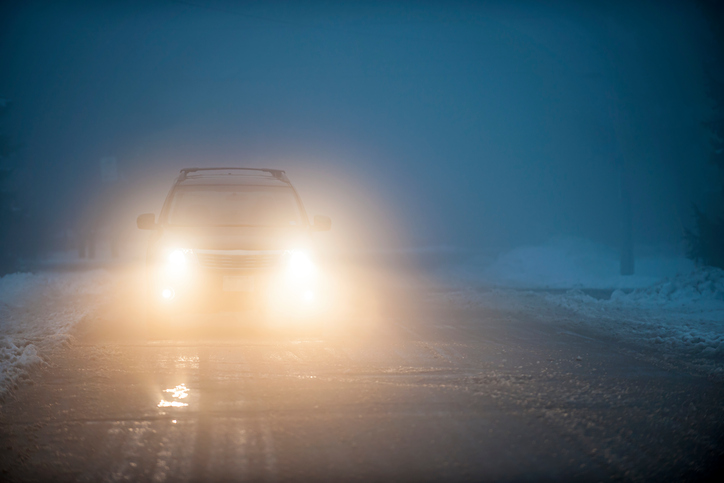Posted on 12/19/2017

If you've ever worried what to do in a situation where your vehicle is recalled, this article All Tech Automotive found on the DMV website gives the answer. What to Do If Your Vehicle Is Recalled If the NHTSA determines a certain vehicle model or vehicle safety feature is defective, it will order a recall. If the manufacturer complies, you will be notified via mail by the manufacturer. In this letter you will be instructed on how the problem will be resolved via one of three ways: Replacement - The manufacturer will replace your vehicle will replace your vehicle with an identical or similar model. Refund - The manufacturer will refund the purchases price, minus depreciation costs. Repair - The manufacturer, the recall letter, will instruct you on where to take your vehicle for repair, along with an estimated repair time and contact information should you have any questions. If you did not receive notification from the manufacturer, but believe your ... read more
Posted on 12/19/2017

When you're driving it is important to keep an eye out to avoid accidents. This article All Tech Automotive founds on the DMV website discusses different ways you can avoid accidents. Avoiding Auto Accidents On the road, accidents are bound to happen. But that doesn't mean you have to be an unfortunate safety statistics. Use the tips below to learn a few simple driving behaviors that can prevent most automobile accidents. Concentrate on Driving Taking your eyes off the road is an easy way to get into a distracted driving accident. It only takes a second for an accident to occur, and the more reaction time you have, the better your chances are of avoiding a collision. Avoid distracted driving by ELIMINATING the following: Cell phone use of ANY kind. Eating. Applying makeup. Reading. Searching for music (on the radio, on your phone, etc.). Reaching into the backseat while the vehicle is moving. A large number of passengers. And don't forget: knowl ... read more
Posted on 12/12/2017
.jpg)
As the roads become icy, we will see an increase of salt on the road. Here's how to prevent rusting from road salt, according to DMV.org Preventing Rust from Road Salt The hazards of winter driving aren't limited to ice and snow. When road departments use salt to melt the freeze, that mineral can wreak havoc on your vehicle. Here, we explain what you can do to keep your car clean and prevent rust from road salt. Why Salt Is Used on Roads In those parts of the country with freezing winter temperatures, drivers know that warming the cars up in the morning isn't the only inconvenience. Icy roads are, too. The same chemical reaction between ice and salt that creates creamy, delicious ice cream also keeps our roads and sidewalks free of dangerous ice during the cold winter months. A salt and sand mixture is frequently spread over roads before or after a snow or ice storm. Salt lowers water's freezing point, causing any ice already formed to melt even though the air ... read more
Posted on 12/6/2017

To keep yourself and others on the road safe, you need to know when it is appropriate to use certain functions on your vehicle, like your headlights. This article comes from the Department of Motor Vehicle website. When to Use Your Headlights To stay and improve your visibility on the road, it's important to know when and when not to use your headlights. Use this guide to learn more about safe headlight practices and common headlight laws. Headlights During the Day Most state headlights do not require the use of headlights during the day unless poor weather decreases visibility. However, using your headlights during the day regardless of the conditions can improve visibility and safety. Here are a few instances when using your car headlights during the day can help you decrease chances of an accident: During adverse weather, such as: Rain Snow Sleet Fog Smoke On rural and mountain roads On narrow two-lane highways When road signs indicate a ... read more
Posted on 12/6/2017
.jpg)
When driving during the winter, it is important to take extra precautions and be prepared. All Tech Automotive found this article from the Safe Motorist website. Preparing for Winter Driving - How to Drive in Snow and Ice The three key elements to safe winter driving are: Stay alert Slow down; and Stay in control Get your vehicle a check-up It is the best to winterize your vehicle before winter strikes. Schedule a maintenance check-up for the vehicle's tire pressure, battery, belts, and hoses, radiator, oil, lights, brakes, exhaust system, heater/defroster, wipers, and ignition system. Keep your gas tank sufficiently full - at least half a tank is recommended. Depending on where you drive, you may consider using winter tires or tire chains. Tires in the snow Winter driving conditions such as rain, snow, and ice dramatically affect the braking distance of a vehicle. The driver's capability to ... read more